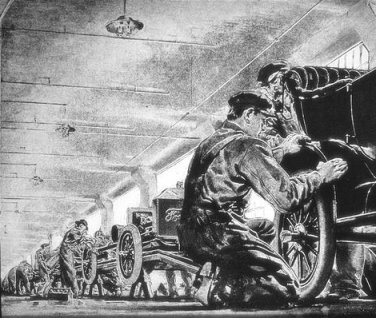
Image courtesy of American
Memory Collection,
Library of Congress

Image courtesy of American
Memory Collection,
Library of Congress
|
_____1)This
term refers to the process of becoming a city-dwelling nation, away from
rural living.
_____2)This
1862 law allowed the two railroad companies to begin building the transcontinental
RR. _____3)This
invention, developed by Samuel Morse, grew along side the expanding railroad
industry. _____4)After making
a fortune in the shipping business,
he became owner of the New York Central RR _____5)He
was granted over 1000 patents including the phonograph, stock ticker, and
indoor incandescent lamp. _____6)He
improved the generator that allowed electricity to be shipped long distances,
but he is best known for the railroad air brake. _____7)This
state contains huge coal deposits and was the site of the first oil well
drilled in 1859. _____
8)This end of this event gave foreign
investors confidence to invest in US business. It also allowed
the railroads to expand and allow for increased production. _____9)This
term involves helping the poor through the donation of huge
sums of money and the creation of organizations
set up to education or feed the poor. _____10)He
built the first trust by buying out the competition in the oil industry
and refineries. _____11)This method of steel production resulted in the improvement in steel quality that allowed for greater railroad development In the mid-1860s.
_____ 12) When more
than one company is controlled by same board of directors, this combination
exists.
_____13)This
law stated that all business combinations in restraint of trade (monopolies)
are illegal.
_____16)He
developed the assembly line from its early beginnings in Samuel Slater's
textile factory of the 1790s. |
A) Interlocking Directorate
B) Pennsylvania C) Urbanization D) George Westinghouse E) Social Darwinism F) J.D. Rockefeller G) Sherman Anti-Trust Act H) Cornelius Vanderbilt I) Pacific Railway Act J) J.P. Morgan K) Telegraph L) The Civil War M) Philanthropy N) Thomas A. Edison O) Bessemer Process P) Henry Ford
|